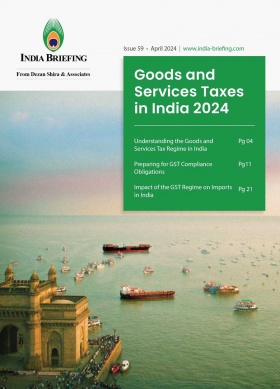Sustainable Development Goals in India: Performance Report for 2023-24
India’s southern state, Kerala, has retained its top ranking in the Sustainable Development Goals (SDG) India Index. The report, released by think tank agency NITI Aayog on July 12, 2024, also noted that India has made significant improvements across all 16 SDGs.
India’s apex public policy think-tank, NITI Aayog, released its latest Sustainable Development Goal (SDG) Index in July, with India’s national score reaching 71 in 2023-24, up from 66 in 2020-21 and 60 in 2019-20, showing significant progress in areas like poverty eradication, decent work, economic growth, climate action, and life on land.
In 2018, India had scored 58, which serves as the baseline for the SDG Index.
According to BVR Subrahmanyam, CEO of NITI Aayog, in addition to making significant progress on all 16 SDG parameters, India is also ahead of schedule in reaching several of the goals, with some predicted to be accomplished before 2030.

Note: The SDG India Index overlaps with the UN Sustainable Development Goals, except for #17 – Partnerships for the goals.
SDG India Index for 2023-24: Performance across key goals
The SDG India Index was first released in 2018. According to NITI Aayog’s fourth edition, the SDG India Index 2023-24, significant progress has been noted in Goal 1 (No Poverty), Goal 8 (Decent Work and Economic Growth), Goal 13 (Climate Action), and Goal 15 (Life on Land). The largest increase in score was observed in Climate Action, which rose from 54 in 2020-21 to 67 in 2023-24, followed by No Poverty, which increased from 60 to 72. India’s overall score is below 50 only for Goal 5 (Gender Equality), highlighting the need for targeted efforts to improve gender equality.
State-wise performance
According to the index, Indian states such as Uttarakhand, Kerala, Tamil Nadu, Goa, and Himachal Pradesh were the highest-scoring states, while Bihar, Jharkhand, Nagaland, Meghalaya, and Arunachal Pradesh lagged. Among the union territories (UTs), Chandigarh, Jammu and Kashmir, Puducherry, Andaman & Nicobar Islands, and Delhi performed best. The scores for states ranged from 57 to 79 in 2023-24, a notable improvement from the 42 to 69 range in 2018.
|
Sustainable Development Goal-Wise: Top Performing States and Union Territories |
||
|
Goal |
State |
Union territories |
|
Goal 1: No Poverty |
Tamil Nadu |
Dadra and Nagar Haveli and Daman and Diu |
|
Goal 2: Zero Hunger |
Kerala |
Puducherry |
|
Goal 3: Good Health and Well-being |
Gujarat |
Delhi |
|
Goal 4: Quality Education |
Kerala, Delhi |
– |
|
Goal 5: Gender Equality |
Nagaland |
Lakshadweep |
|
Goal 6: Clean Water and Sanitation |
Goa |
Andaman and Nicobar Islands |
|
Goal 7: Affordable and Clean Energy |
Andhra Pradesh, Assam, Goa, Haryana, Himachal Pradesh, Karnataka, Kerala, Maharashtra, Mizoram, Punjab, Rajasthan, Tamil Nadu, Telangana, Uttarakhand, Uttar Pradesh, West Bengal |
Andaman and Nicobar Islands, Chandigarh, Delhi, Jammu and Kashmir, Ladakh, Puducherry |
|
Goal 8: Decent Work and Economic Growth |
Himachal Pradesh |
Ladakh |
|
Goal 9: Industry, Innovation and Infrastructure |
Goa |
Puducherry |
|
Goal 10: Reduced Inequality |
Goa |
Puducherry |
|
Goal 11: Sustainable Cities and Communities |
Maharashtra |
Chandigarh |
|
Goal 12: Responsible Consumption and Production |
Tripura |
Jammu & Kashmir |
|
Goal 13: Climate Action |
Sikkim, Tamil Nadu |
Chandigarh |
|
Goal 14: Life Below Water |
West Bengal |
– |
|
Goal 15: Life on Land |
Jharkhand, Tripura |
Dadra and Nagar Haveli and Daman and Diu |
|
Goal 16: Peace, Justice and Strong Institutions |
Gujarat |
Ladakh |
Data by: NITI Aayog
The SDG India Index 2023-24 evaluates the progress of all states and union territories on 113 indicators aligned with the Ministry of Statistics and Programme Implementation’s (MoSPI) National Indicator Framework (NIF). It calculates scores for the 16 SDGs for each state and UT. The SDG Index scores range from 0 to 100, with higher scores indicating greater progress toward the targets. States and UTs are categorized based on their SDG India Index scores as follows:
- Aspirant: 0–49,
- Performer: 50–64,
- Front-Runner: 65–99, and
- Achiever: 100
The report highlights that every state has shown improvement, with score increases ranging from 1 to 8 points.
- Assam, Manipur, Punjab, West Bengal, and Jammu and Kashmir each improved by 8 points since 2020-21.
- The number of states and UTs achieving ‘Front Runner’ status has risen to 32, up from 22 in 2020-21.
- New Front Runners include Arunachal Pradesh, Assam, Chhattisgarh, and others, with Madhya Pradesh, Odisha, Rajasthan, Uttar Pradesh, and Dadra and Nagar Haveli and Daman and Diu among the newly classified.
Central government intervention to achieve SDGs
Key government interventions contributing to SDG improvements include the construction of over 40 million houses under the PM Awas Yojana (PMAY), the installation of 110 toilets and 223,000 community sanitary complexes in rural areas, and the provision of 100 million LPG connections through the PM Ujjwala Yojana. Additionally, over 149 million households received tap water connections under the Jal Jeevan Mission. The Ayushman Bharat-Pradhan Mantri Jan Arogya Yojana benefited over 300 million people, while 800 million people benefited from the National Food Security Act (NFSA). Furthermore, INR 3,400 billion (US$40.67 billion) was directly transferred through PM-Jan Dhan accounts.
Green investment opportunities in India
India’s population growth and expanding economy is growing the market scope for green tech solutions. Foreign investors pushing sustainability and ESG solutions addressing resource consumption, carbon emissions, environmental pollution, and waste treatment can tap into a burgeoning market supported by government incentives. – Melissa Cyrill, Asia Briefing
In terms of foreign direct investment (FDI), investment in India’s renewable energy sector surged to US$2.5 billion in FY 2022-23, a 56 percent y-o-y increase. India allows up to 100 percent through the automatic route for renewable energy projects.
India’s renewable energy sector is attractive due to its labor force, accessible capital, regulatory ease, green hydrogen mandates, and incentives across the clean energy supply chain.
The solid waste management market of the country was valued at US$32.09 billion in 2023 and is projected to reach US$35.87 billion by 2028, with a 2.25 percent CAGR. The market is fragmented, with key players like A2Z Green Waste Management, BVG India, Ecowise Waste Management, Tatva Global Environment, and Hanjer Biotech Energies leading efforts in waste reduction and recycling.
READ MORE: The Scope for Foreign Investment in India’s Green Growth Challenge
IPEF: Developments at the June 2024 Clean Economy Investor Forum
At the Indo-Pacific Economic Framework for Prosperity (IPEF) meeting in June 2024 in Singapore, India’s Commerce Secretary Sunil Barthwal highlighted over US$500 billion in investment opportunities in India by 2030, particularly in clean energy—renewables, green hydrogen, and EV infrastructure. Barthwal emphasized India’s investment potential, ease of doing business reforms, and the importance of the forum in advancing sustainable infrastructure.
Highlights from the IPEF Clean Economy Investor Forum:
- Shortlisted companies: Four Indian companies—ReNew Power, Avaada Energy, Indusbridge Capital Advisors, and Powerica—were shortlisted to pitch energy transition and waste management concepts to global investors.
- Climate tech track: Ten Indian startups and companies (BluSmart, Recykal, LOHUM, Sea6 Energy, EVage Ventures, Kabira Mobility, Batx Energies, Newtrace, Alt Mobility, and igrenEnergi, Inc.) were selected to pitch innovative ideas and technologies that contribute to mitigating or adapting to climate change.
- Development Finance Corporation: The forum’s Development Finance Corporation approved a US$900 million fund for climate investment in India and Southeast Asia.
- Catalytic Capital Fund: Launched by the IPEF to support clean economy projects, with initial support from Australia, Japan, Korea, and the US.
- Temasek and GIC Commitments: Singapore’s Temasek and GIC committed US$25 billion to infrastructure investments in the Indo-Pacific region.
- Green Ammonia Agreement: An agreement was signed between Sembcorp Green Hydrogen India, Kyushu Electric, and Sojitz to produce and export 200 KTPA green ammonia from India to Japan, supporting India’s National Green Hydrogen Mission.

(US$1 = INR 83.58)
About Us
India Briefing is one of five regional publications under the Asia Briefing brand. It is supported by Dezan Shira & Associates, a pan-Asia, multi-disciplinary professional services firm that assists foreign investors throughout Asia, including through offices in Delhi, Mumbai, and Bengaluru in India. Dezan Shira & Associates also maintains offices or has alliance partners assisting foreign investors in China, Hong Kong SAR, Vietnam, Indonesia, Singapore, Malaysia, Mongolia, Dubai (UAE), Japan, South Korea, Nepal, The Philippines, Sri Lanka, Thailand, Italy, Germany, Bangladesh, Australia, United States, and United Kingdom and Ireland.
For a complimentary subscription to India Briefing’s content products, please click here. For support with establishing a business in India or for assistance in analyzing and entering markets, please contact the firm at india@dezshira.com or visit our website at www.dezshira.com.
- Previous Article How Business Matchmaking Services Can Help Your India Market Strategy
- Next Article India’s Global Capability Centers Market Estimated to Reach US$110 Billion by 2030












